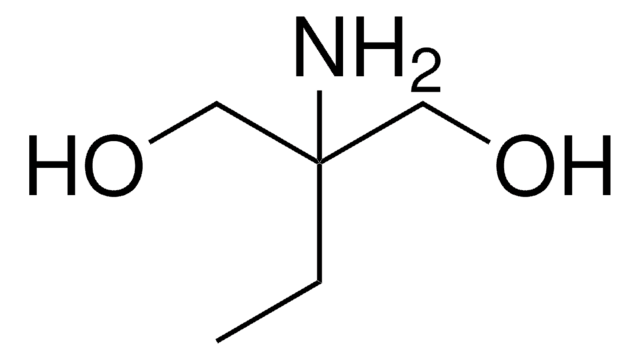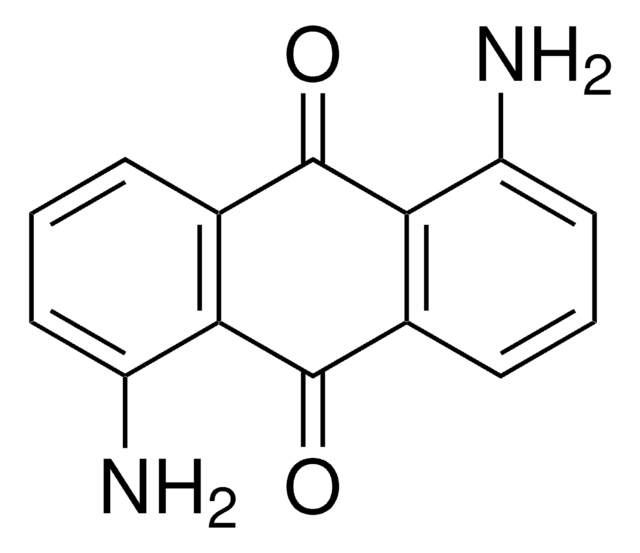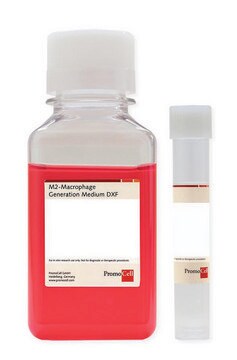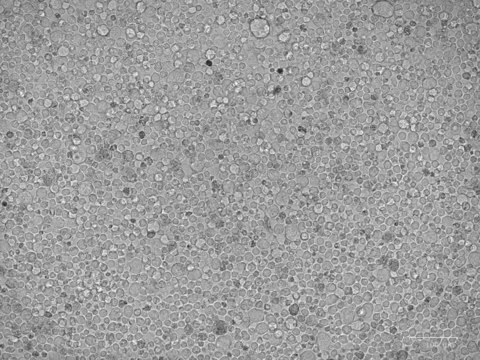6906-50A
Human Peripheral Blood Monocytes: HPBM
Synonym(s):
HPBM, HPBM cells
Sign Into View Organizational & Contract Pricing
All Photos(1)
About This Item
UNSPSC Code:
41106514
NACRES:
NA.81
Recommended Products
biological source
human peripheral blood
form
liquid
packaging
pkg of 5,000,000 cells
manufacturer/tradename
Cell Applications, Inc
growth mode
Suspension
technique(s)
cell culture | mammalian: suitable
shipped in
dry ice
storage temp.
−196°C
General description
Lot specific orders are not able to be placed through the web. Contact your local sales rep for more details.
Human Peripheral Blood Monocytes (HPBM) provide a useful in vitro tool for studying various aspects of pathology and biology. Our CD14+ Monocytes are isolated and purified from human peripheral blood of healthy donors and cryopreserved immediately after isolation.
HPBM are the precursors of tissue macrophages and dentritic cells and are central to immunological responses, including cell-mediated cytotoxicity and production of inflammatory mediators. The CD14 monocyte subset expresses a component of the lipopolysaccharide (LPS) receptor complex, are large with diameter of ~18 um, represent ~80%–90% of circulating monocytes, and express higher levels of CD62L (L-selectin) and CD11b (also referred to as Mac-1 or CR3) and lower levels of MHC class II than do CD16+ monocytes.
Human Peripheral Blood Monocytes (HPBM) provide a useful in vitro tool for studying various aspects of pathology and biology. Our CD14+ Monocytes are isolated and purified from human peripheral blood of healthy donors and cryopreserved immediately after isolation.
HPBM are the precursors of tissue macrophages and dentritic cells and are central to immunological responses, including cell-mediated cytotoxicity and production of inflammatory mediators. The CD14 monocyte subset expresses a component of the lipopolysaccharide (LPS) receptor complex, are large with diameter of ~18 um, represent ~80%–90% of circulating monocytes, and express higher levels of CD62L (L-selectin) and CD11b (also referred to as Mac-1 or CR3) and lower levels of MHC class II than do CD16+ monocytes.
Cell Line Origin
Blood
Application
Immune system dysfunction. Immunological responses, cell-mediated cytotoxicity, production of inflammatory mediators, hematopoiesis, myeloid differentiation, lipopolysaccharide (LPS), receptor complexes, CD62L (L-selectin), CD11b (Mac-1 or CR3), MHC class II.
Packaging
Immediately after isolation, 5,000,000 cells in DMEM containing 45% FBS & 10% DMSO.
Components
DMEM containing 45% FBS & 10% DMSO
Quality
Each lot was tested for proper morphology, CD14 positive selection, Negative for HIV, Hepatitis B, Hepatitis C
Disclaimer
RESEARCH USE ONLY. This product is regulated in France when intended to be used for scientific purposes, including for import and export activities (Article L 1211-1 paragraph 2 of the Public Health Code). The purchaser (i.e. enduser) is required to obtain an import authorization from the France Ministry of Research referred in the Article L1245-5-1 II. of Public Health Code. By ordering this product, you are confirming that you have obtained the proper import authorization.
Storage Class
10 - Combustible liquids
wgk_germany
WGK 3
flash_point_f
Not applicable
flash_point_c
Not applicable
Certificates of Analysis (COA)
Search for Certificates of Analysis (COA) by entering the products Lot/Batch Number. Lot and Batch Numbers can be found on a product’s label following the words ‘Lot’ or ‘Batch’.
Already Own This Product?
Find documentation for the products that you have recently purchased in the Document Library.
Customers Also Viewed
Natalie S Holman et al.
Toxicological sciences : an official journal of the Society of Toxicology, 170(2), 499-508 (2019-05-17)
Most idiosyncratic drug-induced liver injury appears to result from an adaptive immune attack on the liver. Recent evidence suggests that the T-cell response may be facilitated by the loss of immune tolerance. In this study, we explored the hypothesis that
Our team of scientists has experience in all areas of research including Life Science, Material Science, Chemical Synthesis, Chromatography, Analytical and many others.
Contact Technical Service










